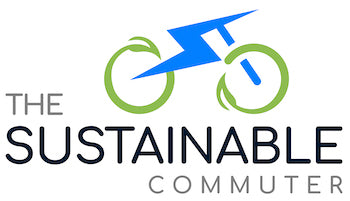
Adapting to Climate Change: Embracing Sustainable Transportation
Share
Climate change is one of the most pressing issues facing the world today. The increasing temperatures, rising sea levels, and extreme weather events are all clear indicators of the urgent need for action. One area where we can make a significant impact is through sustainable transportation.
Sustainable Transportation
Sustainable transportation refers to any mode of transportation that has a reduced impact on the environment and promotes the efficient use of resources. This includes public transportation, electric vehicles, active transportation (such as walking or cycling), and green infrastructure.
Importance of Sustainable Transportation
Addressing climate change through sustainable transportation is crucial for several reasons. First, the transportation sector is one of the largest contributors to greenhouse gas emissions, with vehicles accounting for a significant portion of total emissions. By transitioning to sustainable transportation options, we can significantly reduce these emissions and mitigate the effects of climate change.
Second, sustainable transportation can help reduce air pollution, improve public health, and promote social equity. Many urban areas suffer from high levels of air pollution, which can have detrimental effects on respiratory health. By promoting alternatives to private vehicles, such as public transportation or active transportation, we can improve air quality and create healthier communities.
Finally, embracing sustainable transportation can lead to economic benefits. The transition to electric vehicles, for example, can create new job opportunities in manufacturing, infrastructure development, and maintenance. Investing in public transportation infrastructure can also stimulate economic growth and create more efficient and accessible transportation systems.
Strategies for Adapting to Climate Change through Sustainable Transportation
There are several strategies that can be employed to adapt to climate change through sustainable transportation:
-
Promoting public transportation: By investing in and expanding public transportation networks, we can provide more accessible and efficient alternatives to private vehicles. This can help reduce traffic congestion and emissions while improving mobility and accessibility for all.
-
Development and adoption of electric vehicles (EVs): Electric vehicles produce fewer emissions than traditional gasoline-powered vehicles and can help reduce dependence on fossil fuels. Governments can support the transition to electric vehicles by offering financial incentives, such as tax credits or rebates, to encourage consumers to purchase EVs. This can help make electric vehicles more affordable and accessible to a wider population.
-
Implementing green infrastructure: Green infrastructure includes features such as bike lanes, pedestrian-friendly streets, and green spaces. These features not only promote active transportation but also help to mitigate the effects of climate change by reducing urban heat island effects and improving stormwater management.
-
Encouraging active transportation: By investing in infrastructure that supports walking and cycling, such as bike lanes and pedestrian-friendly streets, we can encourage more people to choose these modes of transportation for short trips. This not only reduces emissions but also promotes physical activity and improves public health.
Government Policies and Financial Support
In addition to these strategies, government policies play a crucial role in supporting sustainable transportation. Financial incentives for electric vehicles, such as tax credits or rebates, can help make EVs more affordable and accessible. Investing in public transportation infrastructure, such as expanding bus or train networks, can also encourage more people to choose public transportation over private vehicles. Implementing low-emission vehicle programs can help reduce emissions from the transportation sector.
Banks and financial companies also have a role to play in supporting sustainable transportation. Many banks are now investing in sustainable transportation initiatives, such as electric vehicle infrastructure or public transportation projects. To find sustainable companies or organizations that support sustainable transportation, consumers can look for certifications or labels such as LEED (Leadership in Energy and Environmental Design) or B Corp certification. These certifications indicate that a company has met certain sustainability criteria and can be trusted to prioritize environmentally-friendly practices.
Conclusion
Adapting to climate change requires a comprehensive approach, and sustainable transportation plays a crucial role in this effort. By promoting public transportation, developing and adopting electric vehicles, implementing green infrastructure, and encouraging active transportation, we can significantly reduce emissions and mitigate the effects of climate change. Government policies, financial incentives, and investments from banks and financial companies also play a crucial role in supporting sustainable transportation initiatives. It is essential that we continue to prioritize and invest in sustainable transportation to address the urgent issue of climate change.
